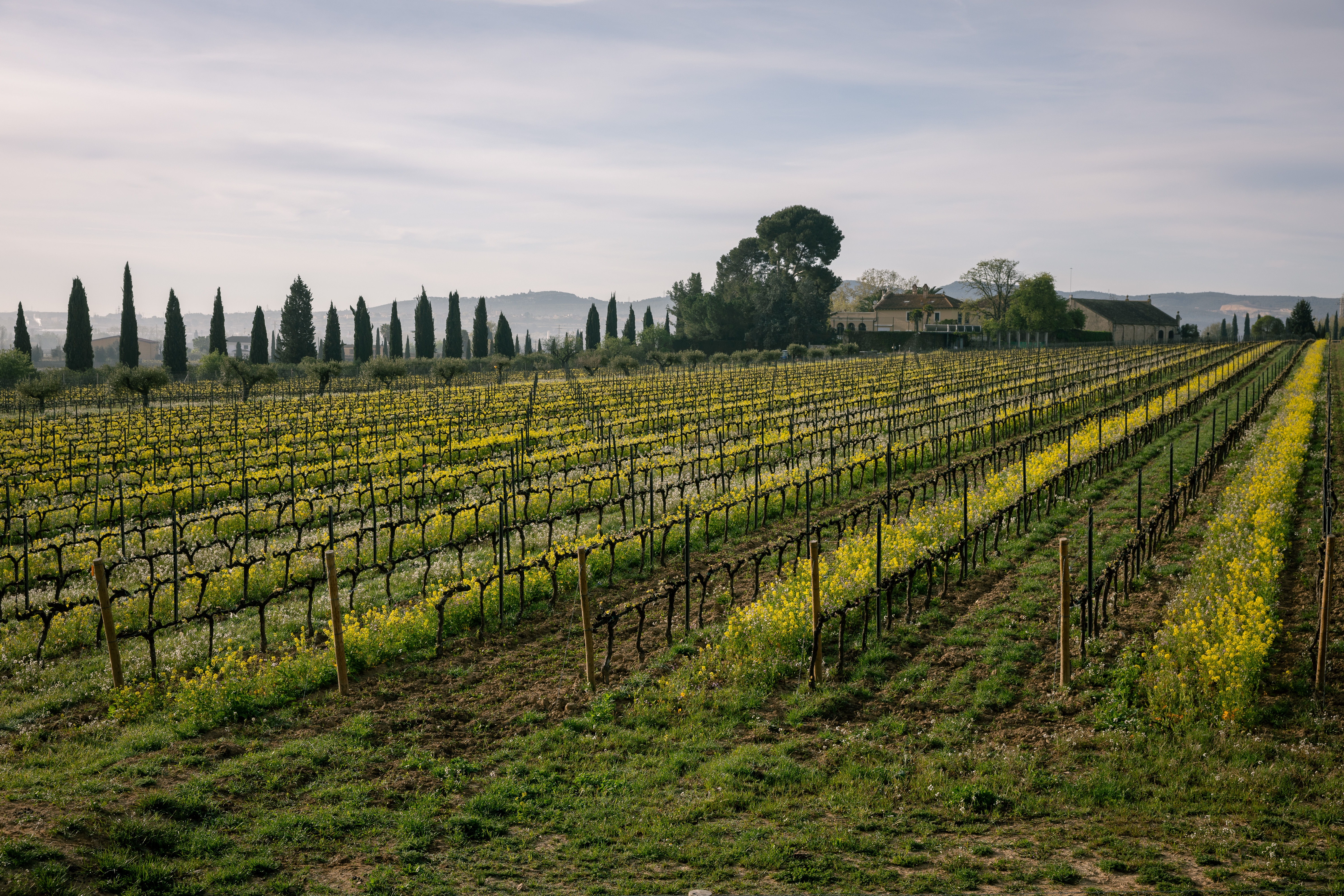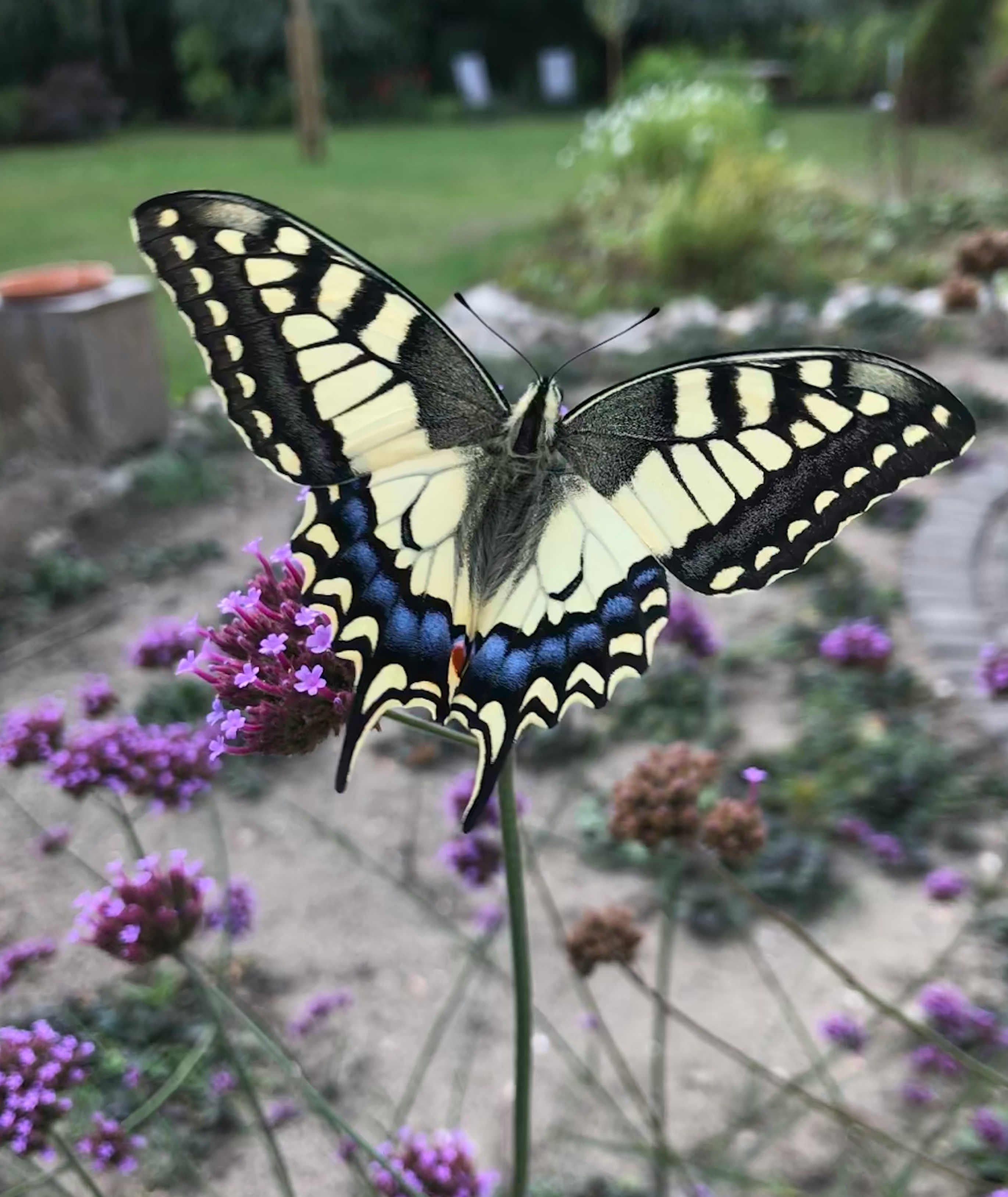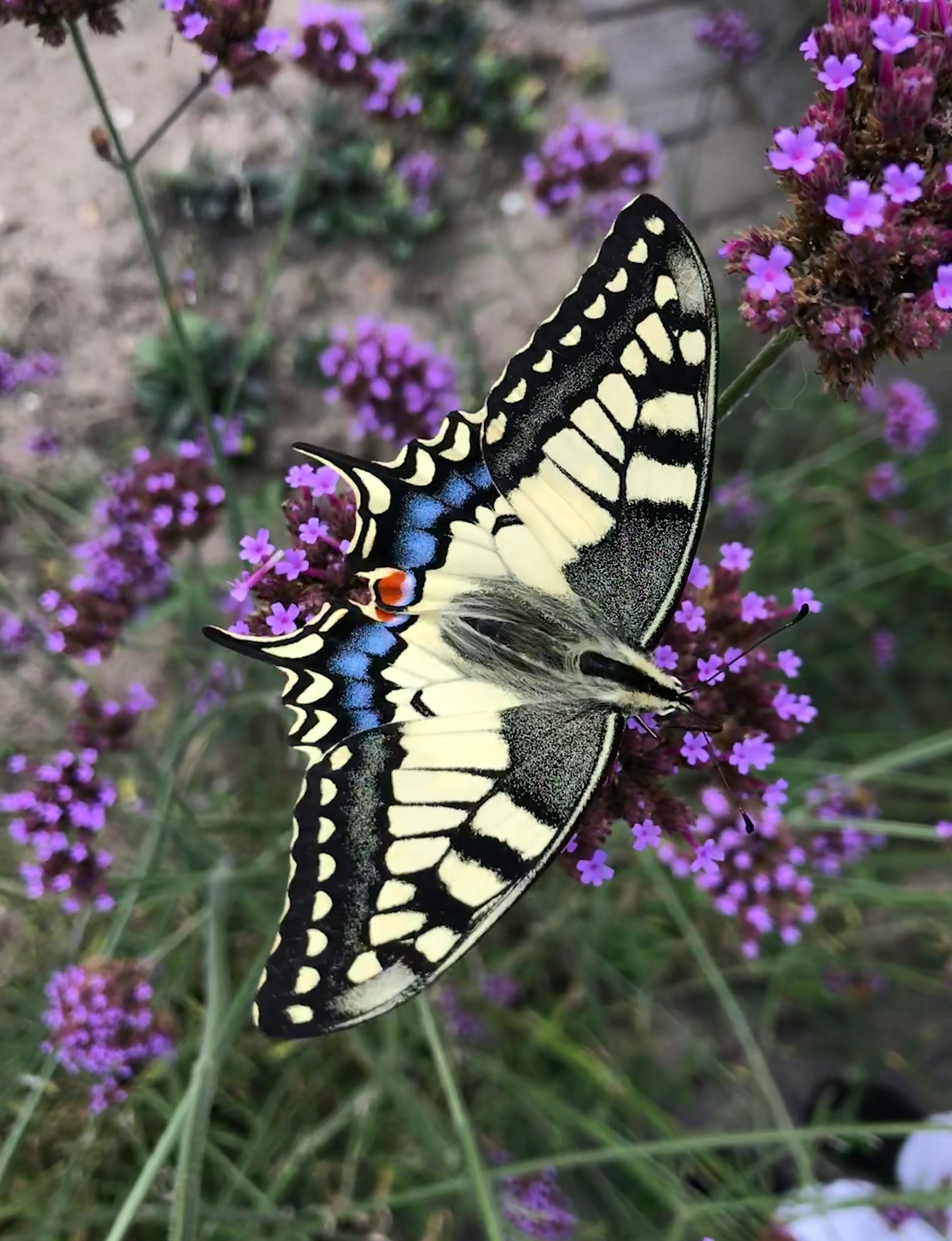The Fragile Beauty of the Swallowtail

By Jose Luis Gallego, environmental communicator (@ecogallego)
Strolling through the countryside in April provides nature lovers with the delightful chance and privilege of observing one of the most fascinating orders of insects among all Iberian fauna: the lepidopterans, better known as butterflies.
In Spain, these spectacularly beautiful invertebrates include almost 5000 species, of which 257 are diurnal butterflies. In addition to mesmerizing us with their elegant flight, butterflies offer a dazzling display of some of the most exquisite designs found on any living thing. Perhaps this explains why several of the most renowned entomologists, such as Swinhoe, Chinery, and Agenjo, fell under their spell and dedicated much of their scientific work to the study and understanding of the biology and habits of these surprising insects.

Spring landscape, Mas La Plana estate (a Familia Torres property)
When it comes to beauty and elegance, no butterfly darting about the blooming fields of the Iberian Peninsula is quite as striking as the swallowtail: a species which entomologists classify under the scientific name Papilio machaon. The name, like that of many butterflies, derives from Greek mythology. Machaon, a hero in Homer’s Iliad, was the son of Asclepius or Aesculapius (as the Romans later renamed him), king of Thessaly and the god of medicine.

A swallowtail alights on a cluster of flowers
His namesake butterfly is among the most spectacular on the Iberian Peninsula. Gorgeously coloured in yellow and black, the hindwings sport extensions reminiscent of a “swallow’s tail”, hence its common name. A few decades ago, the swallowtail was a common species throughout the entire Iberian Peninsula, but the deterioration of its characteristic habitat – open woodland, marshes, and mountain meadows – have made it an increasingly rare sight. On a personal note, when I went for springtime walks as a child, swallowtails made a regular appearance, but these days I spot them so infrequently that every encounter is cause for excitement and celebration. It is one of my favourite species.
The butterfly is undeniably stunning, but so is the caterpillar. Chubby and tubular, it can grow to a length of four centimetres. Its body is composed of thick, soft rings that are pale green in colour with intricate black-orange lines painted down the middle, giving the creature an almost intergalactic appearance. The swallowtail caterpillar essentially feeds on fennel, which is why this is the butterfly’s plant of choice when it comes to depositing her eggs. Hatching occurs a week after the eggs are laid, and the larval stage generally lasts about a month. The chrysalis stage – when the caterpillar is enclosed in a cocoon as it completes its metamorphosis into a butterfly – takes about three weeks, although it can take longer depending on weather conditions: a phenomenon known as diapause.
In Spain, swallowtails are mainly out and about between April and May but are known to linger until September. Their lifespan during this final stage of metamorphosis lasts about 15 days during which males essentially dedicate themselves to arduous, aerial, ballet-style battles (they are very territorial) to defend their domain, attract females, and reproduce before they die.

A swallowtail sits on a purple flower
By increasing or diminishing in number, certain species provide scientists with valuable information about environmental conditions in their habitats – these species are known as bioindicators. Given that butterflies are highly sensitive to climatic alterations and pollution, they are considered excellent bioindicators of global warming and the quality of the environment.
As such, butterflies are more than a beautiful sight, more than a key contributor to raising the biodiversity index by providing numerous vertebrates with a food source – they are also one of the best early warning systems, alerting us to the health of ecosystems and the advancing climate crisis by their abundance (green), scarcity (orange), or absence (red).
If we examine the census counts that lepidopterists have compiled, we can observe an average decrease in populations that some experts estimate at around 30% to 40% (even higher for some species, including our protagonist). We can therefore conclude that in recent years the butterfly warning system has gone from green to orange across all of Europe. A living alert that threatens to definitively dip into the red in many Mediterranean regions where lepidopteran populations have dropped by up to 70%.
This is a deeply unsettling statistic if we consider that more than three-fourths of all flowering plants, including those we grow for food, depend on the action of pollinating insects, especially butterflies.
